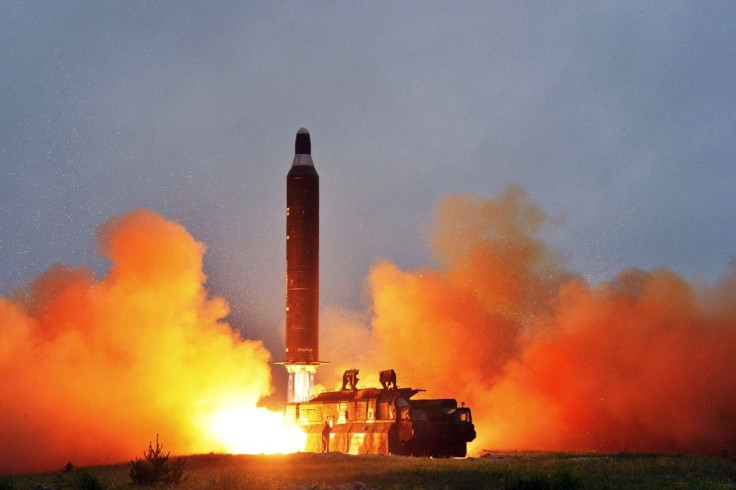Will North Korea Launch An ICBM? Commercial Satellite Images Show No Signs Of Imminent Launch, Report Says

New commercial satellite images of North Korea’s Sohae Satellite Launching Site in North Pyongan province show no signs of upcoming missile launch, 38 North reported Friday. This comes after the reclusive state threatened to launch an intercontinental ballistic missile at any time and from any location.
While the satellite launching site does not show any indications of an imminent launch, it retains the capability to carry out a launch or engine test at any time without prior warning, according to the American think tank’s analysis of the images taken between November 2016 and January 2017.
“Activity at the Sohae launch facility over the past three months indicates both long-term preparations for an engine test and further infrastructure development including paving of roads, construction at support and warehouse facilities and continued housing development,” according to the 38 North report.
However, the rail-mounted environmental shelter at the vertical engine test stand of the site has not been moved since December and “the lack of other indicators, such as activity near the telemetry and observation facilities, suggests that no engine test is imminent. Moreover, both natural-color and color-infrared imagery indicate that there have been no unreported tests during the last three weeks,” the report added.
In addition, there are no visible signs of any launch preparations at the site's launch pad.
“What may be a small vehicle or piece of equipment is visible on the north side of the gantry tower in the Jan. 9 image. No activity has been observed near the fuel and oxidizer building during the past three months … Still, all indications are that the pad remains capable of supporting a launch at any time,” according to the report.
On Sunday, the North Korean foreign ministry said the country was prepared to launch a ballistic missile at any time and from any location. The isolated nation said it developed the ICBM to strengthen its self-defense capabilities and to counter “the ever more undisguised nuclear war threat from the U.S.”
The ministry also said Pyongyang had developed a hydrogen bomb and “had access to standardized nuclear warheads by bolstering up its nuclear weapons on a high level at an unimaginably high speed on the strength of self-development” despite international sanctions.
Following this, the U.S. dispatched the Sea-Based X-Band Radar to the Korean Peninsula. The SB-X is often dispatched north of Hawaii and deployed about halfway to Alaska to track a possible North Korean missile launch targeting Alaska, Guam or the West Coast of the United States.
© Copyright IBTimes 2024. All rights reserved.






















